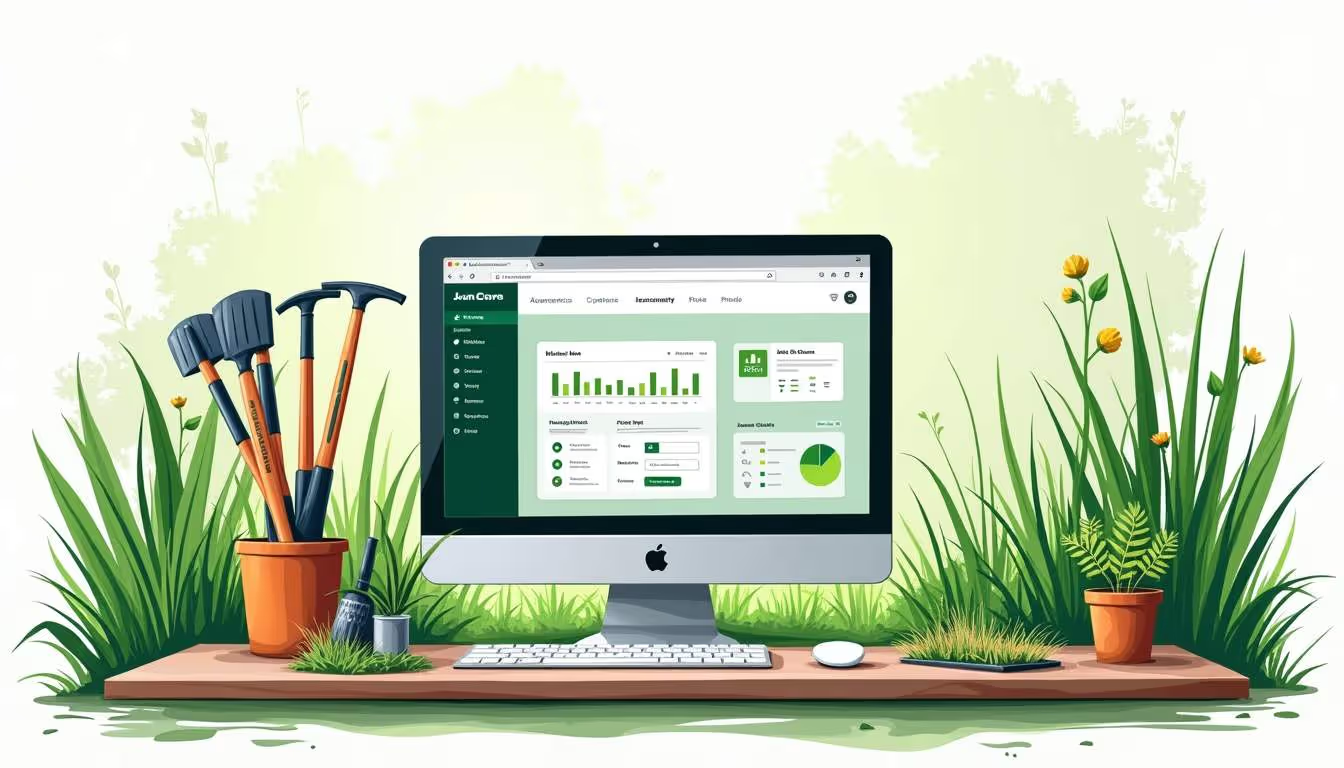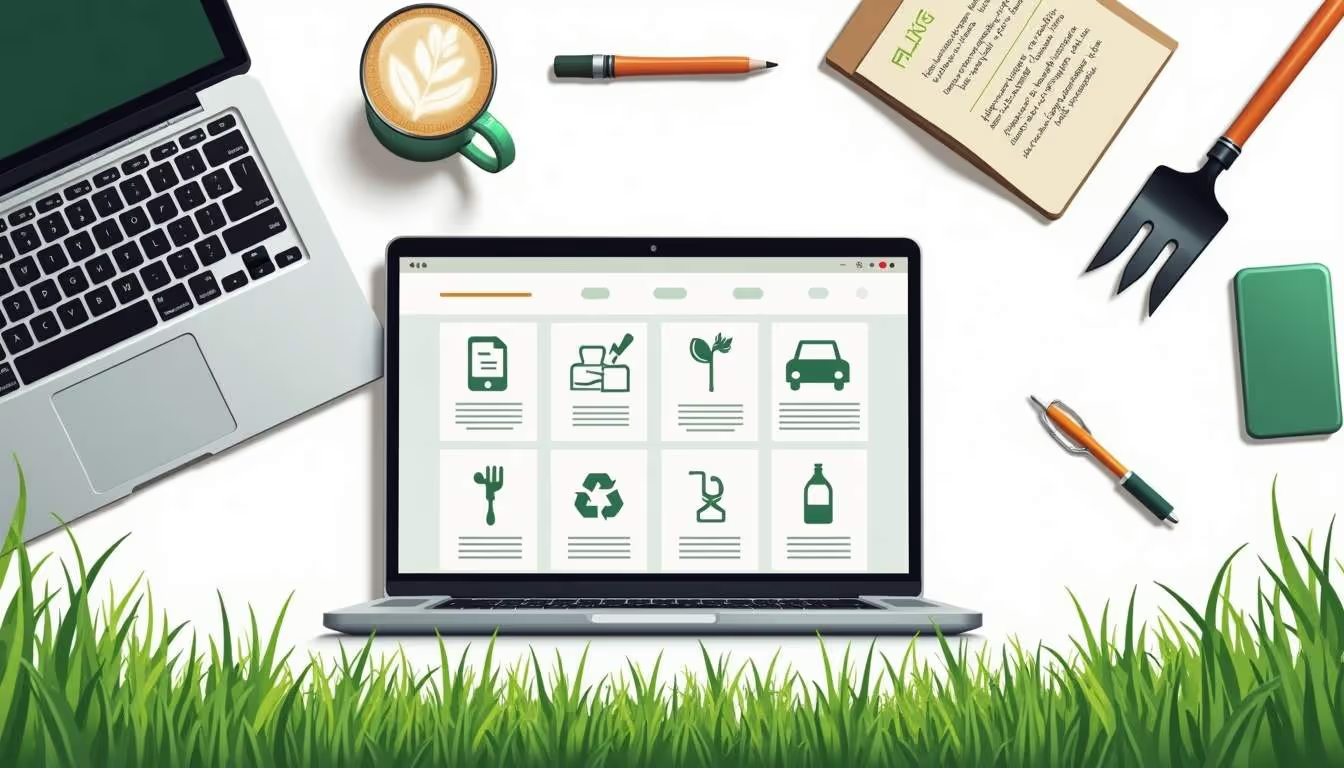Best Software for Lawn Care Companies: Top Picks for 2025
As the lawn care industry continues to evolve, technology is playing an increasingly pivotal role in how companies manage operations, engage customers, and optimize service delivery. With the global lawn care software market projected to grow significantly over the next decade, choosing the right software platform has never been more critical for lawn care businesses aiming to stay competitive and efficient.
In this comprehensive guide, we explore the best lawn care software solutions for 2025, highlighting key features, industry trends, and innovations that can help lawn care companies streamline their workflows and boost profitability.
The Growing Importance of Lawn Care Software
The lawn care software market was valued at $1.57 billion in 2023 and is expected to reach $2.27 billion by 2030, growing at a steady CAGR of 4.6% during this period. This growth reflects the increasing adoption of digital tools by lawn care contractors who recognize the value of technology in transforming traditional service models.
Nearly three-fourths (73%) of contractors consider digital transformation important, underscoring a widespread industry shift toward embracing software solutions that improve scheduling, customer management, billing, and field operations. As lawn care companies face rising customer expectations and operational complexities, software platforms that deliver efficiency and transparency are becoming indispensable.
Why Lawn Care Software Matters
At its core, lawn care software helps businesses manage field service operations more effectively. From route optimization and job scheduling to invoicing and customer communication, these platforms reduce manual work and minimize errors. This not only saves time but also enhances customer satisfaction by ensuring timely, professional service.
Moreover, software solutions increasingly integrate advanced technologies such as artificial intelligence (AI) and robotics, which are reshaping how lawn care services are delivered. For example, AI-powered robotic mowers and spot spraying systems are gaining traction for their ability to reduce chemical usage and labor costs. These innovations not only streamline operations but also promote environmentally friendly practices, appealing to a growing demographic of eco-conscious consumers.
In addition to operational efficiencies, lawn care software often includes features for customer relationship management (CRM), allowing businesses to track customer interactions, preferences, and feedback. This data-driven approach enables companies to tailor their services to meet specific client needs, fostering stronger relationships and increasing customer loyalty. With the ability to send automated reminders, follow-up messages, and personalized offers, contractors can enhance their marketing efforts while maintaining a high level of customer engagement.
Top Lawn Care Software Platforms for 2025
Choosing the right lawn care software depends on the size of your business, specific operational needs, and budget. Below are some of the top platforms that stand out for their comprehensive features, scalability, and innovation.

Emerging Trends Shaping Lawn Care Software in 2025
Beyond core management features, several emerging trends are influencing the development and adoption of lawn care software. Understanding these trends can help companies choose platforms that future-proof their operations.
AI and Robotics Integration
Artificial intelligence is beginning to make a tangible impact in lawn care. Although 83% of contractors currently do not use AI, those who have adopted it report positive business outcomes. For example, AI-powered robotic mowers and spot spraying systems are revolutionizing lawn maintenance by improving precision and reducing resource consumption.
In June 2025, Yard Force launched a new lineup of sustainable lawn and garden innovations, including AI-powered boundary-free robot mowers and zero-emission lithium-ion riders. These advancements not only reduce environmental impact but also improve operational efficiency. Furthermore, the integration of machine learning algorithms allows these robots to adapt to various terrains and weather conditions, making them even more effective in maintaining lawns of all types. As these technologies become more accessible, we can expect to see a significant shift in how lawn care services are delivered, with a growing emphasis on smart solutions that cater to individual customer needs.
Efficiency Through Automation and Data Analytics
Modern lawn care software increasingly incorporates automation to handle repetitive tasks such as scheduling, billing, and customer follow-ups. This frees up valuable time for business owners and technicians to focus on delivering quality service.
Additionally, data analytics capabilities enable companies to track key performance indicators, identify trends, and make informed decisions. For instance, an end-to-end framework for robot lawnmower coverage path planning has been developed, enhancing operational efficiency by optimizing mowing patterns. By leveraging predictive analytics, companies can also forecast demand and adjust their resources accordingly, ensuring that they are well-prepared for peak seasons. This proactive approach not only boosts productivity but also enhances customer satisfaction, as clients receive timely and efficient service tailored to their specific lawn care needs.
Sustainability and Environmental Responsibility
Environmental concerns are driving innovation in lawn care technology. Studies have shown that robotic spot spraying can reduce herbicide usage by 35% compared to traditional broadcast spraying without compromising weed control effectiveness. Such sustainable practices are becoming a selling point for lawn care companies aiming to attract eco-conscious clients.
Moreover, the rise of organic lawn care solutions is reshaping the industry landscape. Companies are increasingly offering eco-friendly fertilizers and pest control options that align with the growing consumer demand for sustainable practices. This shift not only helps in reducing the carbon footprint of lawn care operations but also fosters a healthier ecosystem. As more homeowners become aware of the environmental impact of their landscaping choices, lawn care providers that prioritize sustainability will likely gain a competitive edge in the market, appealing to a demographic that values green practices and responsible stewardship of natural resources.
How to Choose the Best Software for Your Lawn Care Business
With so many options available, selecting the right software can be daunting. Here are key factors to consider:

Assess Your Business Needs
Identify the specific challenges your company faces. Do you need better scheduling tools, improved customer communication, or advanced financial reporting? Understanding your priorities will help narrow down the best fit.
Scalability and Flexibility
Choose software that can grow with your business. Platforms offering modular features or tiered pricing allow you to add capabilities as your needs evolve.
User Experience and Support
A user-friendly interface reduces training time and increases adoption among your team. Additionally, reliable customer support is crucial for resolving issues quickly and minimizing downtime.
Integration with Existing Tools
Consider how the software integrates with your current accounting, marketing, or CRM systems. Seamless integration saves time and reduces data silos.
Cost vs. Value
While cost is important, focus on the value the software delivers in terms of efficiency gains, customer satisfaction, and revenue growth. Sometimes investing a bit more upfront can yield significant long-term benefits.
Looking Ahead: The Future of Lawn Care Software
The lawn care software market is poised for continued growth, with some forecasts predicting a surge to $2.5 billion by 2033, driven by a CAGR of 9.5% from 2026 onward. This rapid expansion reflects the increasing reliance on technology to meet the demands of modern lawn care operations.
As AI, robotics, and sustainability-focused innovations become more mainstream, lawn care companies that adopt forward-thinking software solutions will be better positioned to enhance productivity, reduce environmental impact, and deliver superior customer experiences.
Investing in the right software today is not just about managing tasks more efficiently—it’s about future-proofing your business in an industry that is rapidly embracing digital transformation.
Conclusion
For lawn care companies aiming to thrive in 2025 and beyond, selecting the best software platform is a strategic decision with far-reaching implications. Platforms like ProValet, ServiceTitan, Jobber, LMN, and Aspire offer powerful tools tailored to different business sizes and needs, enabling companies to streamline operations and improve profitability.

Embracing emerging technologies such as AI and robotics, alongside sustainable practices, will further differentiate forward-looking lawn care businesses. By carefully evaluating your operational requirements and choosing a scalable, user-friendly software solution, your company can harness the full potential of digital transformation and secure a competitive edge in the evolving lawn care landscape.







